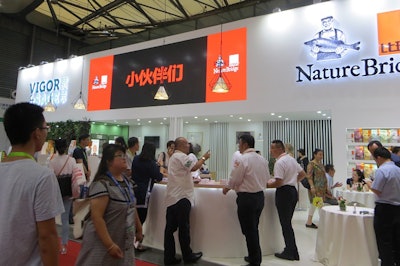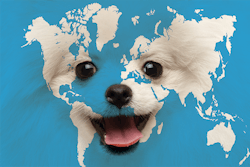
Many product categories have become caught up in the ever-escalating trade and tariff wars between the world’s two largest economies, and pet food is not immune. Since July 6, pet food exported from the U.S. to China has been subject to a 25 percent tariff, and that may not be the end of it as the countries’ leaders continue to threaten further retaliation.
Though Chinese pet owners have seemed to prefer pet food brands from the U.S. and other developed markets, perceiving them to be safer and of higher quality, these consumers are now apparently feeling the effects of price increases resulting from the tariffs on U.S. pet foods. Global Times, a media company based in China, reported recently that some Chinese pet owners are considering boycotting U.S. pet food imports — and not just because of the higher prices. At least one pet owner interviewed by Global Times blamed the U.S. for the trade war.
Tariffs not the only thing boosting domestic pet food industry
While pet food brands from companies headquartered outside of the country still account for 66 percent of the US$2.2 billion Chinese pet food market, according to GfK data, that share has declined from 74 percent in just one year. Even before and aside from the tariff wars with the U.S., the Chinese government has been supporting and promoting the domestic industry and its growth.
Sometimes that means discouraging (at least indirectly) pet food imports. For example, the license required in China to sell pet foods from outside the country has always been notoriously difficult to obtain. Then, new pet food regulations issued in May closed a loophole that previously allowed U.S. and other non-domestic pet food companies to sell their products via a mechanism called cross-border e-commerce, in which companies could send their products to a free trade zone, such as Hong Kong, and an online consumer order through a Chinese e-commerce platform could be fulfilled from that inventory.
Comments from Wang Jinquan, Ph.D., associate professor with the Feed Research Institute of the Chinese Academy of Agricultural Sciences (a government agency) and lead drafter of the pet food regulations, lay out the government’s perspective quite clearly. “With the rapid development of e-commerce, some foreign pet food manufacturers overrode the regulatory control of the Ministry of Agriculture and entered into the Chinese market through B to C channels; foreign pet food has price and brand advantages and superiority, this has an impact on the domestic pet food product.”
(Disclosure: Wang will be presenting the new regulations and updated information on the Chinese pet food industry at Petfood Forum China 2018 on August 21 in Shanghai.)
So, it seems that the popularity of U.S. and other non-Chinese pet food brands among Chinese pet owners may have hurt them in the long run — and the current trade situation certainly can’t help.
Foreign vs. domestic pet food producers in China
As for those non-Chinese companies that have been able to register their pet food products with the Chinese government, they numbered a record high of 60 in 2017, according to Wang. (Note that those are “enterprises” importing pet food, not individual brands.) Only 16 of those companies are from North or South America: Canada, Brazil and Argentina, in addition to the U.S. It’s unclear how many of those companies are from the U.S. alone, but it’s interesting that 13 or fewer producers represent the world’s largest pet food market in this fast-growing pet-owning country.
The largest bloc of companies, 23, come from European countries (Belgium, France, Netherlands, England, Germany, Spain, Norway, Czech Republic); yet the best representation belongs to Australia and New Zealand, which together account for 11 companies. Asia — specifically, Malaysia, Thailand, South Korea and Japan — is represented by eight companies.
In preliminary data to be presented at Petfood Forum China, Wang called out nine domestic dog or cat food brands whose annual sales volume exceeded 100 million RMB (US$14.5 million) in 2017, according to a report compiled by him and colleagues at the Ministry of Agriculture. The companies’ revenues ranged from just over 600 million RMB (US$87 million) for Hua Xing to 100 million RMB for Yeasa.
Monitoring activity at Pet Fair Asia
While those revenues may seem small compared to those of other pet food companies around the world, Chinese producers are growing fast. For example, Navarch Pet Products, which ranked sixth on Wang’s list with about 175 million RMB in sales (US$25.4 million), is experiencing 36 percent compound annual growth.
Perhaps another sign of these Chinese pet food companies’ rising strength is their presence at large pet trade shows (in China and elsewhere) like Pet Fair Asia, which will follow Petfood Forum China in Shanghai next week. The size and activity of their stands easily rivals those of multinational brands.
Still, those multinationals’ stands have always attracted a lot of attention and traffic; I will be watching to see if Chinese retailers and other pet industry professionals still visit them at the same pace as in previous years. No matter what, I anticipate that many discussions in Shanghai will revolve around the tariffs, the new pet food regulations and consequences of both. Whether those discussions provide any clarity remains to be seen — stay tuned for a follow-up report.
















